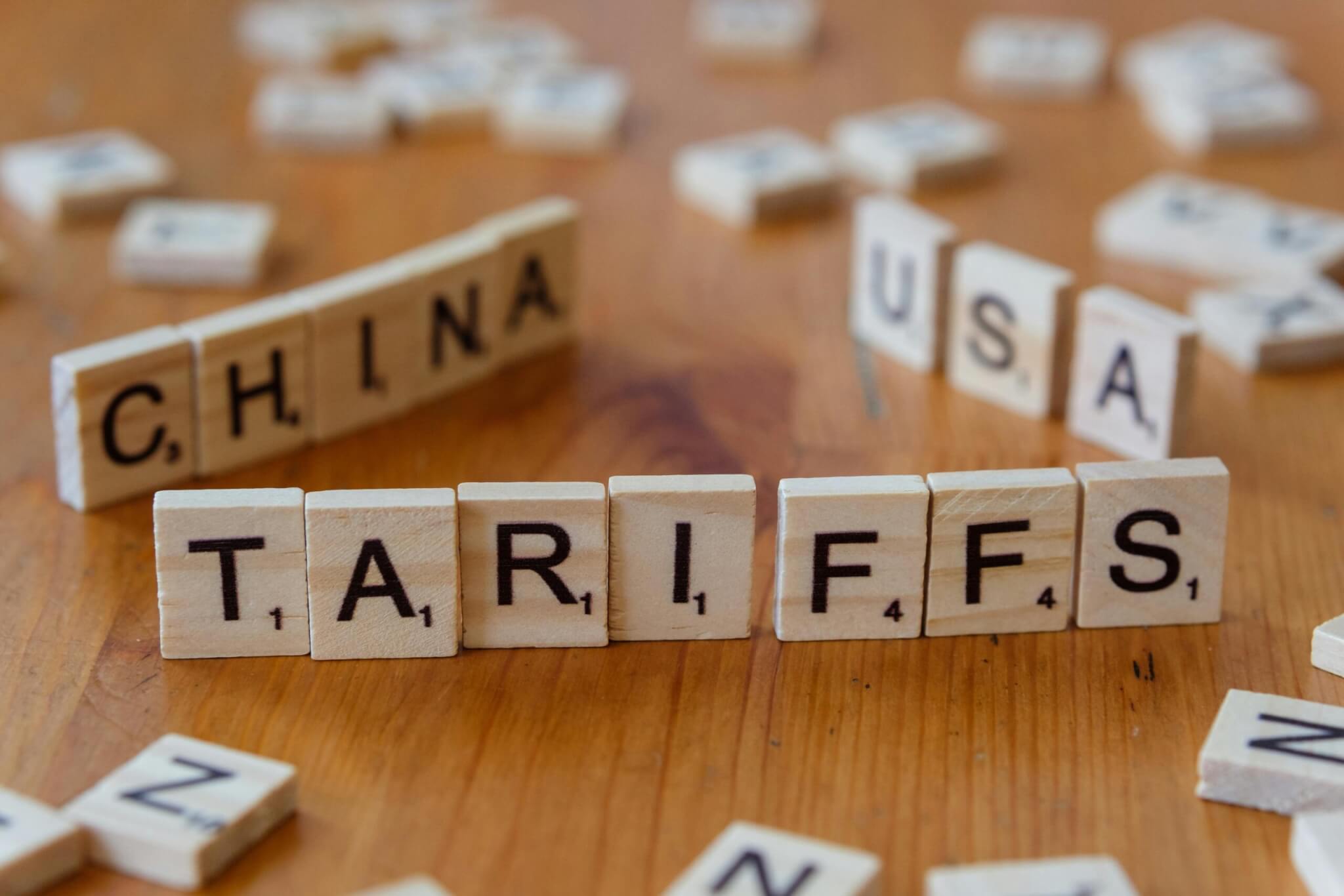Jul 09, 2025
5 min read
What Happens If You Miss a Business Loan Payment?
Business loans can be a critical source of working capital, helping...
Read story

President Donald Trump’s sweeping new tariff policy is set to reshape how American businesses operate. The plan includes a 10 percent baseline tariff on nearly all imports, along with significantly higher rates on goods from key trade partners. Imports from China will face a 34 percent tariff, South Korea 25 percent, and Vietnam 46 percent. The administration has framed these moves as an effort to protect U.S. industries and strengthen national security.
For business owners, the implications are immediate and far-reaching. Tariffs can drive up input costs, disrupt supply chains, shift consumer demand, and introduce uncertainty into long-term planning. Navigating these changes requires more than just awareness—it calls for proactive, strategic action.
In this article, we’ll walk through seven practical strategies your business can use to adapt, reduce risk, and stay competitive in the face of rising tariffs and global volatility.
If your business relies heavily on suppliers in countries like China, Vietnam, or South Korea, the new tariffs could dramatically increase your costs. One of the most effective ways to reduce exposure is by diversifying your supply chain.
That doesn’t always mean a complete overhaul. It could involve finding alternative suppliers in countries not currently targeted by high tariffs, such as India, Mexico, or even sourcing closer to home. Some businesses are exploring nearshoring options to improve resilience and cut lead times.
According to The Wall Street Journal, many companies began shifting production out of China during earlier rounds of tariffs, with countries like Mexico and Brazil emerging as attractive alternatives. However, this transition isn’t always simple. Establishing new supplier relationships, ensuring quality standards, and managing logistics can take time and careful coordination.
Key Tip: Start by mapping your top suppliers by geography and product category. Identify which ones are most exposed to new tariffs and begin vetting alternative vendors now—before bottlenecks or price spikes force a rushed decision.
Tariffs can quickly erode profit margins, especially for businesses reliant on imported goods or materials. It’s essential to conduct a comprehensive review of your cost structure to understand where tariffs may have the most significant impact and to identify opportunities for efficiency elsewhere.
Begin by pinpointing expenses directly or indirectly tied to imports, such as raw materials, components, finished products, or packaging. Assess what can be renegotiated, re-sourced, or reduced. Flexibility in supplier contracts, shipping terms, or inventory practices can help offset rising costs.
According to Forbes, understanding how tariffs specifically affect your business is crucial. For instance, a construction company heavily reliant on imported steel or lumber may face direct cost increases, whereas a restaurant sourcing locally might experience minimal impact. Proactive assessment enables businesses to adapt swiftly and avoid unexpected financial strains.
Key Tip: Collaborate with your finance team or accountant to review your income statement thoroughly. Identify cost centers linked to international sourcing and model the financial impact of tariff-induced price increases. This proactive approach allows for informed decision-making and strategic adjustments to maintain profitability.
Once you understand where tariffs are increasing your costs, the next step is determining how much—if any—of those costs to pass on to your customers. For many businesses, that’s a delicate balance between protecting margins and maintaining customer loyalty.
Start by assessing your product or service’s price sensitivity. If your customers are highly price-conscious, even a modest increase could result in lost sales. But if you offer specialized or high-value goods, your pricing power may be stronger than you think. In some cases, small price changes—paired with strong communication—can be absorbed without losing customers.
A recent Simon-Kucher & Partners study found that many U.S. consumers are already adjusting their spending habits due to inflation and import costs. Businesses that are transparent about why prices are rising tend to retain more customer trust than those who make silent increases.
Pricing strategy doesn’t always mean raising sticker prices, either. Some companies are using strategies like value bundling, shrinking package sizes, or adjusting service tiers to balance rising costs without direct increases.
Key Tip: Don’t wait until your margins are squeezed. Model pricing scenarios now, test changes where you can, and communicate clearly so your customers understand the value they’re getting.
In light of the recent tariff implementations, it’s prudent for businesses to explore potential avenues for relief. The U.S. government has established processes that allow companies to. Engaging with these procedures can potentially alleviate some of the financial burdens imposed by the new trade policies.
The Office of the United States Trade Representative (USTR) periodically opens windows during which businesses can submit requests for tariff exclusions. These requests are evaluated based on specific criteria, including:
It’s essential to provide comprehensive documentation and justification when submitting an exclusion request. Detailed information about the product, its uses, and the impact of the tariff on your business operations will strengthen your case.
Key Tip: Stay informed about the USTR’s announcements regarding exclusion request periods. Preparing your documentation in advance can position your business to respond promptly when opportunities arise.
If your business imports goods that are later exported—either in the same form or as part of a manufactured product—you may be eligible for a duty drawback, a refund on previously paid import tariffs. While not widely utilized by smaller companies, this program can return up to 99 percent of the duties, taxes, and fees paid on eligible goods.
The U.S. Customs and Border Protection (CBP) oversees the duty drawback process, and while the paperwork can be complex, the financial benefits are often substantial for companies involved in re-exporting. This is especially valuable in industries such as manufacturing, chemicals, and electronics where imported components are frequently used in goods sold abroad.
According to CBP, over $2 billion in duty drawback refunds were processed in 2023 alone, with many companies using third-party specialists to streamline the process and ensure compliance.
Even if you don’t currently export, reviewing past imports for potential retroactive claims may still be worthwhile. Under U.S. law, some drawbacks can be claimed for up to five years after importation.
Key Tip: If you import and export regularly, consult with a licensed customs broker or drawback specialist. They can help you determine eligibility and file claims accurately to recover significant funds.
Incorporating advanced technology into your supply chain can significantly enhance efficiency, visibility, and adaptability—key factors in mitigating the impact of tariffs and other disruptions. Modern supply chain technologies offer tools to optimize operations, predict demand fluctuations, and respond swiftly to changing market conditions.
Automation and robotics can streamline warehouse operations, reducing labor costs and minimizing errors. For instance, companies like Attabotics have developed robotic systems inspired by ant colonies to optimize storage and retrieval processes, leading to more efficient use of space and resources.
Artificial intelligence (AI) and machine learning algorithms analyze vast amounts of data to identify patterns and predict demand more accurately. This capability allows businesses to optimize production planning and inventory management, ensuring that supply aligns closely with customer demand.
Implementing Internet of Things (IoT) devices and blockchain technology can provide real-time tracking of goods throughout the supply chain. This transparency helps in quickly identifying and addressing bottlenecks or disruptions, thereby maintaining a smooth flow of products.
Amazon has revolutionized its supply chain by integrating AI to enhance demand forecasting and logistics optimization. This approach has led to reduced inventory costs, improved delivery times, and increased resilience against global disruptions.
Key Tip: Evaluate your current supply chain processes to identify areas where technology can have the most significant impact. Investing in the right technological solutions can lead to long-term savings and a more resilient operation, better equipped to handle the challenges posed by tariffs and other market fluctuations.
In a volatile trade environment, having strong, reliable supplier relationships can make all the difference. Tariffs can put stress on vendor pricing, lead times, and contract flexibility—but trusted suppliers are often more willing to collaborate on solutions than transactional ones.
Take the time to revisit your key supplier agreements. See if there’s room to renegotiate terms, explore bulk pricing, or implement longer-term contracts that lock in rates. Suppliers may also be open to working with you on alternative sourcing strategies or shipment timelines that better align with your business needs.
According to a recent piece from Marsh & McLennan, proactive communication and collaboration between buyers and suppliers is one of the most effective ways to build resilience into your supply chain. In many cases, suppliers are just as eager to maintain long-term relationships as you are.Key Tip: Schedule regular check-ins with your most critical vendors. Keep them updated on your forecasted demand, challenges you’re facing, and any changes in your sourcing strategy. Building a transparent, two-way relationship now can pay off when market conditions tighten.

Jul 09, 2025
5 min read
Business loans can be a critical source of working capital, helping...
Read story

Jun 18, 2025
5 min read
A personal guarantee is a legally binding promise made by a...
Read story

Jun 12, 2025
3 min read
Running a business means understanding your numbers. One of the most...
Read story

A funding specialist will get back to you soon.
If you can’t hang on then give us a call at (844) 284-2725 or complete your working capital application here.